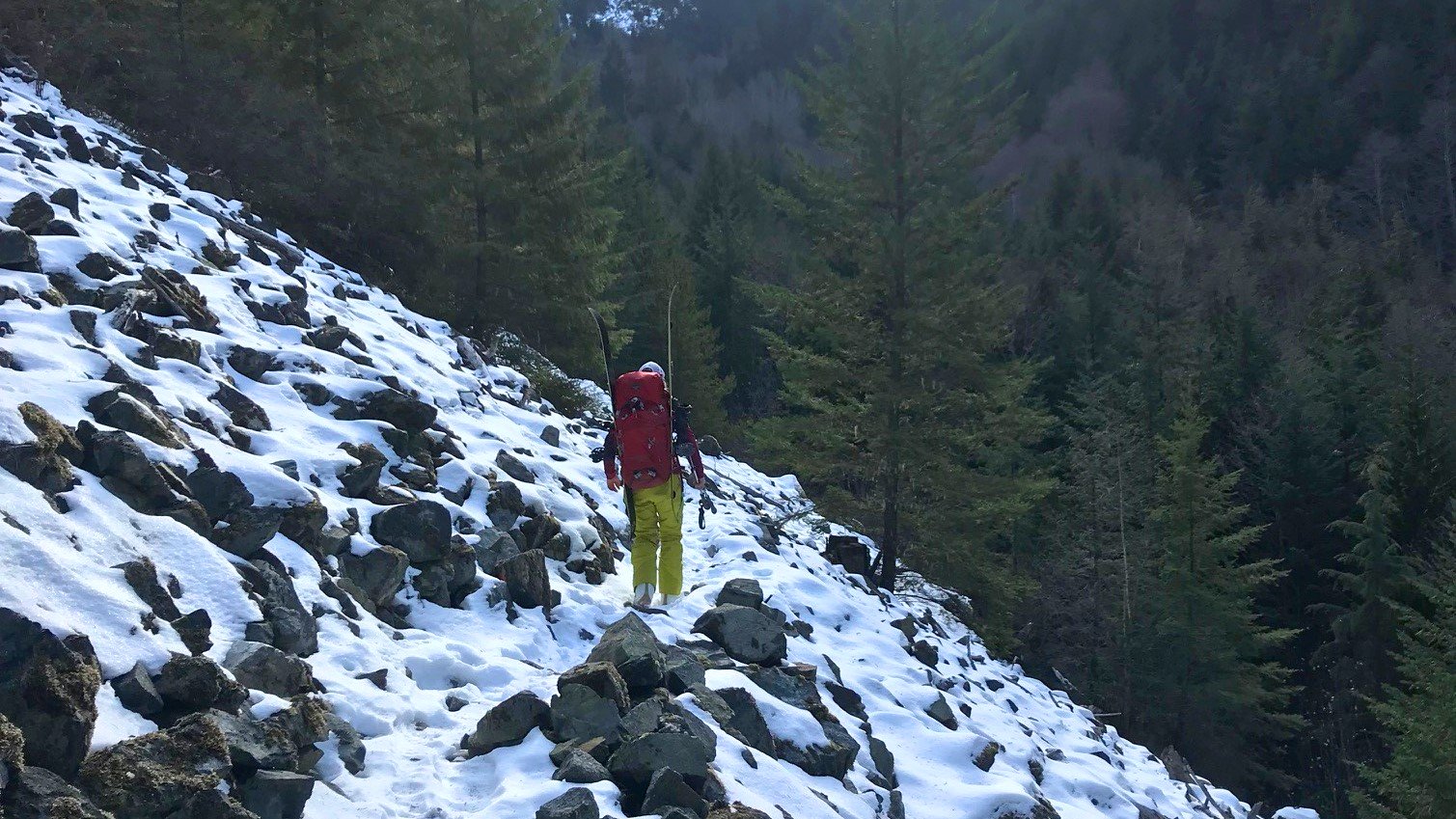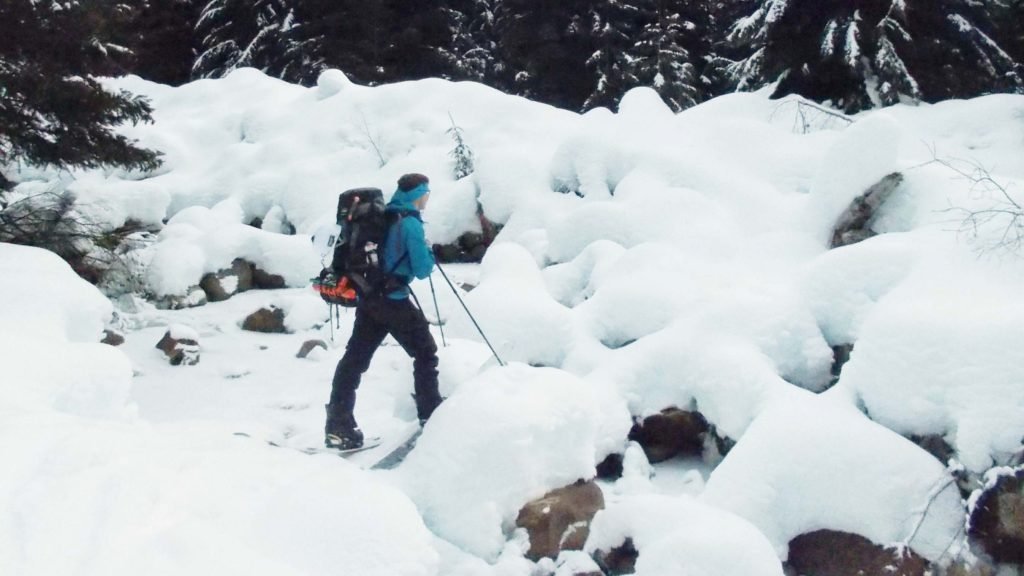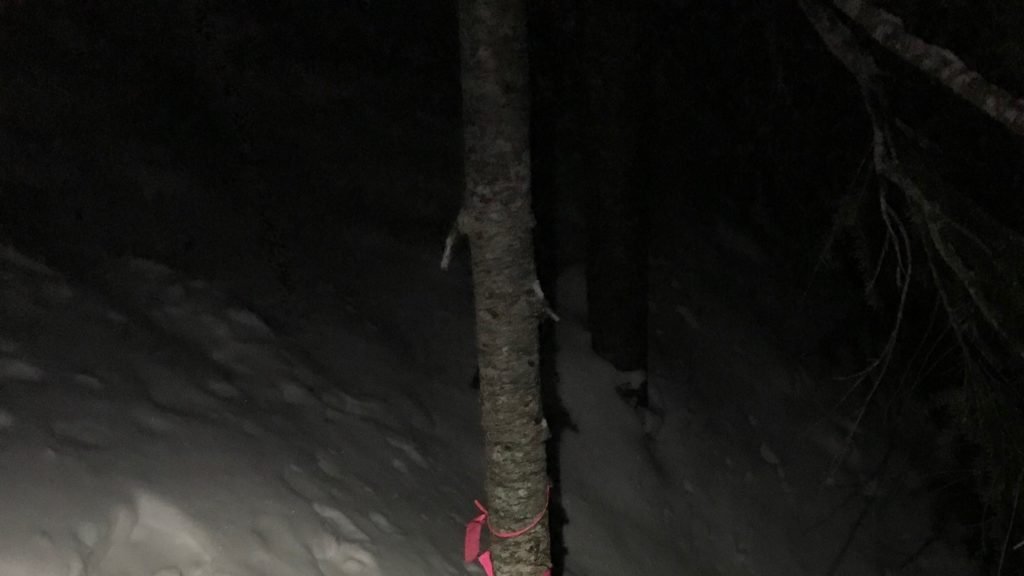Skiers Rescued After Surviving Night in Snow Cave

January 31, 2020
When Matthew Desfosses and his skiing partner set out in the
early hours of a February 2019 morning, the plan was to spend the night in
Lizzie Creek Cabin in the mountains of southeast British Columbia. Instead,
they spent the night battling hypothermia in a snow cave.
Little did they know that they were a mere 500’ from the
cabin. Darkness, blizzard conditions and the cabin’s naturally dense
surroundings had thwarted their ability to find it.
That day, they had spent nearly 16 hours making their way
toward the cabin with packs and skis. Some of the winter access trails they planned
to follow had not been packed down, forcing the two skiers to bootpack up
summer hiking trails.
Throughout the day, fresh ski tracks had led them in the
wrong direction, causing them at one point to bushwhack to get back to the
intended trail.
“Needless to say, that was not ideal,” Desfosses said. “It
took quite some time and some energy.”

About 12 hours into the ski, they became exposed to the
elements above tree line. The hut is located within an island of trees in a
small valley between two mountains, and by the time they made it into the
valley it was dark and snowing heavily.
“That was not too much of a concern, just a bit of a
nuisance realistically,” Desfosses said. “But as we progressed into the valley,
the wind picked up, and the visibility went down to maybe 10 or 15’.”
They found a few other ski marks from that day, but the
tracks were getting filled in rapidly by snow. Based on their research,
Desfosses and his partner knew the hut was located on the left-hand side of the
tree line, but when they headed that direction, they encountered an impassable
boulder and block of ice.
Their only choice was to go toward the right-hand side and approach
the hut from the back side. There, they found more ski tracks that they thought
certainly would lead to the hut. They did not.
By that point, it was midnight. They were exhausted. They
knew where the cabin should have been, based on maps, but simply could not find
it.
“We elected to just cross the entire island of trees from inside the forest,” Desfosses said. “North, south, east, west — no signs of the cabin. I knew on the map where it was, and I knew roughly where we were — we should’ve been right on top of it — but we couldn’t find it.”

They started screaming and whistling, desperately hoping
that someone in or near the cabin would hear them over the howling winds.
“No answer, obviously, with the weather,” Desfosses said.
“So at that point, it was becoming quite apparent that we were going to be
spending the night on the hill.”
Desfosses built a snow cave under a tree well and started
preparing to spend the night. To warm up, Desfosses asked his partner to get
rice and hot chocolate out of her bag.
“Her responses were quite slow and absent and eventually
just zoned out,” he said. “She was unable to entertain a conversation, so I
knew she was approaching phase two of hypothermia.”
Desfosses, a paramedic by trade and an avid outdoorsman, was
concerned.
“I knew she needed to get off the mountain sooner rather
than later, and I was uncomfortable as well,” he said.
So Desfosses triggered an SOS on his inReach® satellite communicator and began messaging with the staff at the GEOS International Emergency Response Coordination Center. Due to the darkness and weather, they updated Desfosses that a helicopter would be dispatched at first light.
“It was quite reassuring to have that back and forth,” he
said.
Cold and exhausted, Desfosses and his partner went to sleep
in the snow cave. While they hadn’t packed lightly, they had packed intending
to spend the night in a cabin with a woodstove. To stay warm, they put on all the
layers of clothing they had packed and piled up additional layers of maps and
bags between themselves and the snowy ground.
At one point, his partner announced she was feeling hot and
began peeling off layers. Desfosses knew from his medical training that was a
bad sign.
“People don’t become hot and wanting to peel off their
jackets in minus 20-degree weather,” he said. “At that point, you’re
progressing down the ladder of hypothermia.”
He instructed her to keep the warm layers on, and eventually
they both fell asleep. To their relief, the sound of a helicopter awoke them
the next morning.

As Desfosses and his partner flew away to safety, they saw how
close they had made it to the hut.
“That was the most frustrating thing,” Desfosses said. “But
it was a hut that was built in the 1960s, and it’s so grown in now that the
search and rescue person said that even during the day you can walk in front of
this cabin two or three times, and you…
